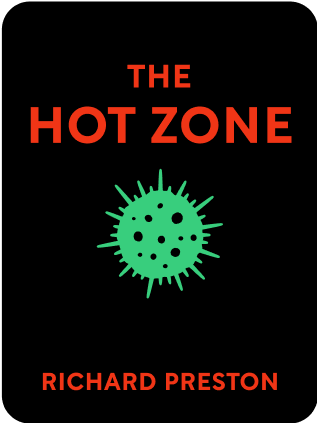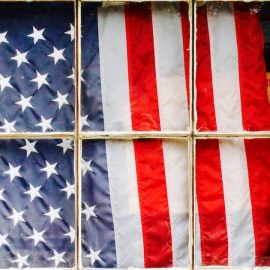

This article is an excerpt from the Shortform summary of "The Hot Zone" by Richard Preston. Shortform has the world's best summaries of books you should be reading.
Like this article? Sign up for a free trial here .
What is the United States Army Medical Research Institute of Infectious Diseases? What do they do?
United States Army Medical Research Institute of Infectious Diseases focuses on fighting viruses and bacteria, and on how to contain outbreaks.
Read more about the United States Army Medical Research Institute of Infectious Diseases and what they do.
1983: U.S. Army Ebola Experiments
In 1983, a U.S. Army civilian scientist and Ebola expert named Eugene Johnson led research on the Ebola and Marburg viruses. Johnson and his team infected monkeys with Ebola Zaire, then gave them various drugs in hope of finding one that either treated or cured the virus.
Johnson conducted his experiments at the United States Army Medical Research Institute of Infectious Diseases (USAMRIID) at Fort Detrick, Maryland. The work at United States Army Medical Research Institute of Infectious Diseases focused on fighting viruses and bacteria—whether weaponized or naturally occurring—by developing vaccines and studying how to contain outbreaks.
United States Army Medical Research Institute of Infectious Diseases Level 4 Hot Zones
USAMRIID researchers studied Biosafety Levels 0, 2, 3, and 4 agents (there is no Level 1). Ebola was a Level 4 hot agent, which are lethal viruses that have no vaccines or cures.
Before entering a Level 4 hot zone, researchers went through a multistep safety process, including:
- Removing all their jewelry and clothing, including underwear
- Putting on sterile surgical pants and shirt
- Covering hair with a surgical cap
- Getting bathed in ultraviolet light, which impaired viruses from replicating
- Putting on latex gloves and taping the edges closed around the cuffs of their shirtsleeves
- Taping socks around the ends of their pant legs
- Putting on biological space suits, which were made of thick plastic and included attached rubber gloves
- Wearing a latex glove over the rubber space-suit gloves, creating three layers of protection for researchers’ hands, which were at the greatest risk as they handled blades and sharp bones
- Donning a plastic helmet and rubber boots
- Crossing through a gray area, which provided a margin between the hot zone and the regular world. The gray area also contained the decontamination shower, which sprayed researchers with a combination of water and chemicals as they exited the hot zone.
Any researchers whose suits had been breached and who were exposed to a Level 4 hot agent had to be quarantined in the USAMRIID’s biocontainment hospital, called the Slammer. Those who died were buried in a Level 4 biocontainment morgue, called the Submarine.
No risk could be overlooked when dealing with such deadly and highly infective agents.
All Four Reston Workers Contract the Virus
As Ebola Reston ran through the facility, one of Hazleton’s animal caretakers—referred to as John Coleus—cut his thumb as he was performing a necropsy on one of the monkeys. The blade was covered in blood from the monkey’s liver, where Ebola virus particles tend to concentrate. There was no question he’d be infected.
However, Coleus appeared to be fine. Another health issue forced him to have a minor surgery shortly after he’d been exposed, but, unlike typical Ebola patients, his blood coagulated normally.
All four caretakers from the Reston facility—Coleus, Purdy, Frantig, and another worker—ultimately tested positive for Ebola Reston. But none of them ever broke with symptoms. Of the four, only Coleus was exposed through a cut, meaning Purdy and Frantig must have contracted the virus through the air.
United States Army Medical Research Institute of Infectious Diseases Deems Ebola Reston Airborne
When United States Army Medical Research Institute of Infectious Diseases researchers viewed samples of infected monkeys’ lungs, they saw that the virus had gotten into the lungs, taken over the cells, and multiplied until the cells were bursting with virus particles. The virus was present in the lungs’ air spaces, so when the infected monkey coughed, the virus shot out with the sputum. The same would be true in infected humans.
Although the virus was harmless to people at that point, researchers worried that it could easily mutate to become just as deadly to people as the other filoviruses—and its airborne transmission would make the effects far deadlier.
On one hand, the close contact required for transmission and the successful containment at Hazleton relieved some fear of a major epidemic or pandemic. On the other hand, all the questions that still remained about the filoviruses—including their hosts, where they originate, and how and why they emerge—amplified the fear of future outbreaks.
(Shortform note: Since the book’s publication in 1995, there have been Ebola outbreaks every few years, the majority of which have been Ebola Zaire. Most have been fairly small (less than 100 cases) and centered in Western Africa, but one was a far outlier: From 2013-2016, Ebola Zaire spread across 10 countries, infecting more than 28,000 people and killing more than 11,000.)

———End of Preview———
Like what you just read? Read the rest of the world's best summary of Richard Preston's "The Hot Zone" at Shortform .
Here's what you'll find in our full The Hot Zone summary :
- The many different strains of Ebola, including the deadliest kind with a kill rate of 90%
- How scientists unraveled the mystery of a new strain of Ebola
- How Ebola could become airborne, becoming one of the deadliest viruses known






